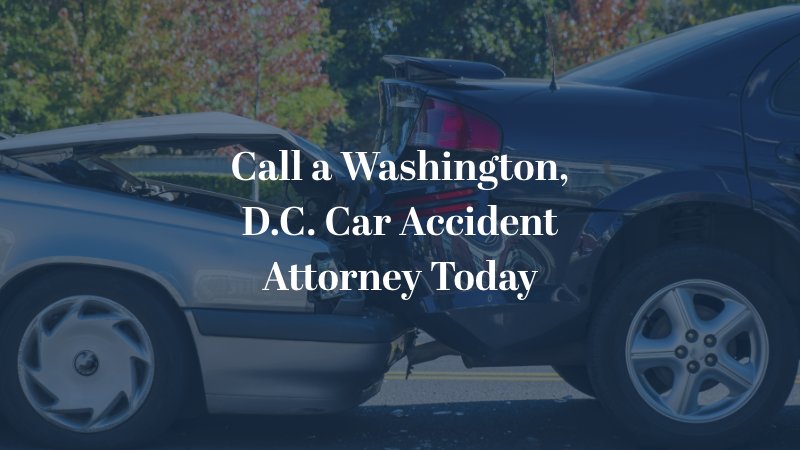Car accidents are among the leading causes of injury and property damage on roadways worldwide. Despite advancements in vehicle safety and traffic regulations, collisions remain prevalent due to various factors. If you need legal advice on your unique case, our car accident lawyers in Washington, D.C. are here to help. Below is an overview of some of the most common types of car accidents that lead to personal injury claims:

Rear-End Collisions
A rear-end collision happens when one vehicle hits the one in front of it. This can be caused by tailgating or being distracted while driving. Rear-end collisions are some of the most common accident types and may result in whiplash injuries or damage to property.
T-Bone Accidents
T-bone accidents happen when one vehicle strikes another from the side, resembling a “T” shape at impact. They often take place at intersections where one driver fails to yield right-of-way, and they can often lead to severe injuries due to how exposed passengers and drivers are when hit from the side.
Head-On Collisions
These accidents involve two vehicles striking each other head-to-head. They are often among the most devastating types of accidents due to the combined force of both vehicles’ speeds at impact. Factors such as driving under the influence or reckless overtaking can contribute to head-on collisions in a car or truck accident, frequently resulting in serious injuries or fatalities.
Single-Vehicle Accidents
A single-vehicle accident occurs when a car crashes without colliding with another vehicle, such as hitting a tree, pole, guardrail, or rolling over. These incidents may stem from factors like driver negligence, speeding around curves too quickly, poor road conditions, and even wildlife crossing unexpectedly on highways.
Multi-Car Pile Ups
This type of accident involves three or more vehicles crashing together in a chain reaction – often occurring during adverse weather conditions while cars fail to keep proper distance between themselves. Multi-car pile-ups can lead to numerous injuries for involved parties and complicate liability claims since many aspects must be considered concerning fault and causation among various participants
Sideswipe Accidents
Sideswipe accidents occur when two vehicles are traveling parallel to each other and inadvertently make contact. This often happens during lane changes or merges when drivers fail to check their blind spots adequately. Depending on the force of impact, sideswipes can result in vehicle damage and minor injuries, but they may cause more severe outcomes if a driver loses control.
Each type of accident presents its own unique risks and potential for injury. If you’ve been injured as a result of someone else’s negligence, reach out to a Washington, D.C. car accident lawyer as soon as possible.
Why Car Accidents Occur
Car accidents often happen due to a combination of human error, environmental factors, and mechanical failures. Below are some of the most common causes:
- Distracted Driving: Distractions such as texting, talking on the phone, or adjusting in-vehicle technology divert attention away from driving. Even momentary lapses in focus can lead to collisions because a driver may not react in time to changing road conditions or other vehicles nearby.
- Speeding: Exceeding posted speed limits reduces a driver’s ability to react quickly while also increasing the severity of an impact during crashes. Drivers who travel too fast may miss crucial cues such as traffic signals, stop signs, or changes in road conditions, leading to more frequent accidents.
- Driving Under the Influence: Alcohol and drugs significantly impair judgment, coordination, and reaction times. Impaired drivers may struggle to stay in their lanes or misinterpret traffic signals – all of which heighten the risk of collisions with other vehicles or pedestrians.
- Weather Conditions: Adverse weather conditions like rain, snow, fog, or ice can make driving hazardous. Reduced visibility and slippery roads increase stopping distances and reduce control over the vehicle. Drivers who fail to adjust their speed or maintain distance in poor weather are at a higher risk of accidents.
- Reckless Driving: Aggressive maneuvers such as tailgating, weaving between lanes without signaling, brake-checking, and cutting off other drivers fall under reckless driving behavior. This type of driving increases the risk of collisions and can create unpredictable situations for everyone on the road
- Fatigue: Drowsy driving significantly impairs concentration and reaction time comparable to the effects of alcohol. Individuals who drive while fatigued risk falling asleep behind the wheel and are less able to make quick decisions necessary for safe driving.
If you’ve been injured because someone else was engaged in these negligent behaviors, you may be entitled to compensation. Contact us today to schedule a free consultation with a car accident lawyer at Lightfoot Law, PLLC.